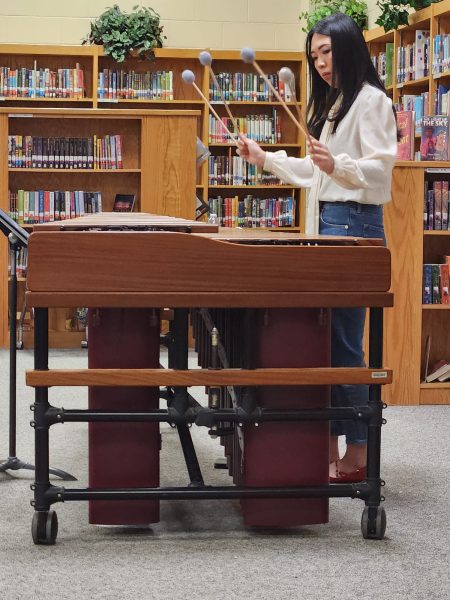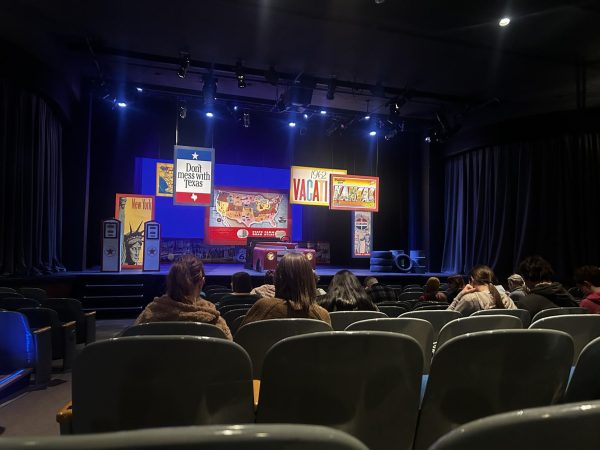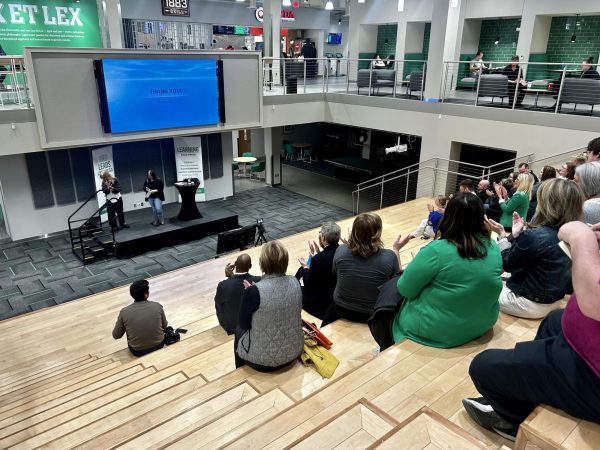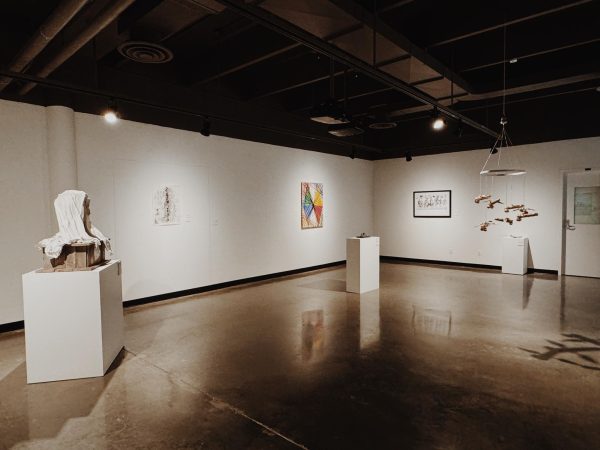International wind ensemble, Breaking cultural barriers
February 14, 2017
On Saturday night, the UND wind ensemble was joined by special guests from halfway around world for its first ever International Wind Ensemble Concert. 67 students from The Affiliated High School of Peking University Concert Band, directed by Guanlu Guan, and the Shenzhen Middle School Symphonic Band, directed by Cheng Huang, were in Grand Forks from their native China for the “International Wind Ensemble Clinic.”
This final concert was the culmination of three days’ worth of rehearsing with the UND Wind Ensemble, sectional workshops and private lessons from the faculty. The visiting schools are both highly ranked in China and are notable for sending many of their students to the United States for college. Therefore, the agenda for their stay also included tours of UND, the local Red River and Central High Schools and English, as well as Chinese, reading sessions.
Dr. Nariaki Sugiura, UND Music Department’s Director of International Recruitment, emphasizes the importance of events such as this that help the University to become a more globalized campus. “Music is a universal language,” Sugiura said. “We are here, with many people, not completely understanding each other. However, When we play music, somehow, we understand each other’s culture and language.”
The concert opened with two pieces featuring the International Wind Ensemble and the Red River High School Symphonic Band. The first, titled, “Dance of Youth,” was conducted by Huang, and the following, “Elegy for a Young American,” was conducted by Red River’s conductor, Dave Christianson.
The musician’s stellar energy and performance as an ensemble prove music is a form of communication in and of itself that transcends cultural and language barriers. Huang said he can feel the energy of all the students, no matter their racial or cultural background, when they rehearse together.
Guan explains that this immersion experience for the Chinese students also has drastically improved them as musicians in ways that differ from the traditional methods of teaching. “They learned new techniques by learning to play music with different students,” Guan said. “Now, they need to get used to different conductors and different group people. It’s their way of learning how to communicate through music without language.”
Both the Chinese and American students performed exceptionally separately and together, even the pieces they would normally be culturally unfamiliar with.
The Chinese students were having fun performing the upbeat “The Magnificent Seven,” Elmer Bernstein’s popular score to the 1960 Western film. The Chinese Folk Song, Romantica Charms of Pentatonism, highlighted each section’s skills and exemplified the cohesion of the entire ensemble through a synchronised, but joyous clapping, smooth melodic transitions and rhythmic precision.
The musical talent of the night was not limited to performers, however. French Horn player Mofan Dai debuted her composition, “Rhododendron Simmii Over the Mountain.” Elegant yet bold, the piece showcased the skills of every section of the ensemble, from the moving woodwinds and brass players, as well as the precision of the percussionists. The audience was even more in awe when it was revealed that the young composer is only sixteen years old. Dai explains that her piece was written as a homage to her school and the experiences and memories that she has had there.
“The name of the original piece was actually called the name of the road beside my school, and I feel a lot of emotions towards my school because I will spend six years there,” Dai said. “I really wanted to write something that describes the school.”
Currently in her 5th year, Dai will be graduating next year and plans on returning to the United States, though not exactly sure where, for college. She will be pursuing a degree in music education.
Following the final scheduled piece of the night, a dramatic and moving Danzon No. 2, and a round of thunderous applause, Guan surprised the audience with another musical treat. The normally very formal wind ensemble and stood up and began playing an exciting composition while having fun dancing along to their parts. Guan made the audience a part of the ensemble by conducting their claps.
Its spontaneous nature made this piece a treat and a fun reminder that music really does bring people together. The moment resonated with the opening speaker’s welcome at the beginning of the concert. “Beyond this, all of us, students and faculty, share a love of music that crosses generations, time, and language,” she said. “What could be better than that?
Stephanie Hollman is a staff writer for The Dakota Student. She can be reached at [email protected]











